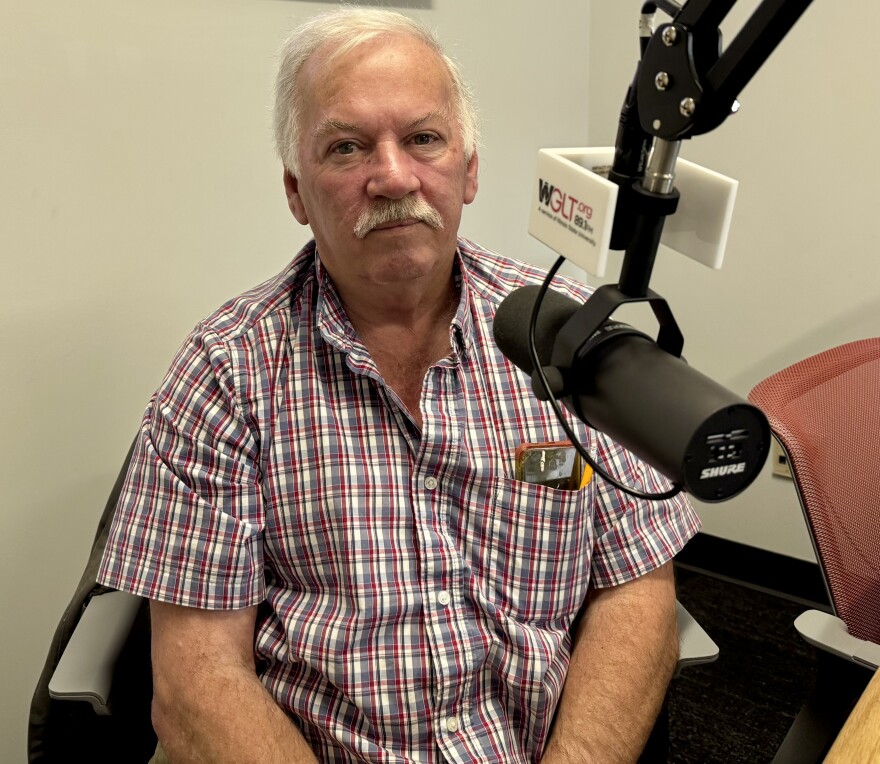A new traveling exhibit has landed in Central Illinois highlighting the state’s history with the Underground Railroad.
Beginning around 1820, thousands of enslaved people fled the south in search of freedom. A network of routes and safe houses formed between the southern states and Canada until the onset of the Civil War.
Pontiac Public Library Director Kristin Holzhauer applied to bring Journey to Freedom: Illinois’ Underground Railroad to Pontiac at the first opportunity.
"We needed this in our community," Holzhauer said. In collaboration with Pontiac’s tourism board, they were among the first to apply to Springfield-based historical society Looking for Lincoln that prepared and produced the exhibit.
“Obviously, we have a lot of connection to Abraham Lincoln’s history here in Pontiac,” said Holzhauer. “A lot of that history isn’t just Abraham Lincoln himself. A lot of that history is the story of his time.”
Freedom seekers often traveled on foot, frequently following rivers and rails. It was a journey filled with peril and risk — to both freedom seekers and the so-called conductors who helped them by providing food, shelter and safe passage.
“A lot of these stories have really, ultimately, not been told,” said Holzhauer. “This was something that [was] illegal. It was secretive. It was underground, as they say. To have an exhibit that highlights the people, the places, the towns and the assistance they received is very special.”
The exhibit highlights locations known to have been part of the Underground Railroad in Illinois — most were along the Mississippi River.
“We were the last part of Illinois to be settled because we were swamp grounds and we had no railroads,” said Livingston County Historical Society president Dale Maley.

Activity increased as new towns cropped up in the area through the 1840s. Mount Hope, a vanished southwest McLean County settlement near present day McLean, is one of nine abolitionist hot spots featured in the exhibit. According to the 1879 History of McLean County, the group of Rhode Island and Massachusetts congregationalists who formed the settlement were “rank abolitionists.” Anti-slavery activists also are known to have settled Pleasant Hill southeast of Lexington.
Maley is a lifelong resident of Fairbury and has written scores of articles and books about the history of Livingston County. On Tuesday evening, he’ll give a talk at the library, in conjunction with the exhibit, about his research into a little-known Underground Railroad route through Livingston County, originating west of Fairbury and extending to Ottawa.
Among the exhibit’s highlights is a video produced by Looking for Lincoln with five actors portraying historical figures like Eliza Little and George Burroughs. Little and her husband John escaped enslavement in Tennessee, crossing the Ohio River on a log to enter Illinois near Cairo.
From there, they made their way to Chicago on foot. Burroughs was a Canadian-born Black man who came to Central Illinois and used his position as a porter on the Illinois Central Railroad to help freedom seekers. These and others like Peoria abolitionist Lucy Pettengill also are featured on a photo wall with a QR code that leads to each figure's story.

Until Abraham Lincoln issued the Emancipation Proclamation, federal law restricted both freedom seekers and those aiding them. If caught, enslaved individuals were sent back to the South. Abettors faced prosecution, fines and jail time—even in Illinois, a free state. Holzhauer said public sentiment varied across the state, including in Central Illinois.
“The freedom seekers that would enter into our state couldn’t assume the people they were engaging with were safe or could be trusted,” she said. “They risked their lives. They risked other peoples’ lives. This is one place that tells that comprehensive story.”
Holzhauer said she's seen visitors from out of town come into the library specifically for the exhibit. Others happen upon it. Several teachers have arranged for their classes to view the display.
“I think they’re surprised most by how personal the story of this exhibit really is,” Holzhauer said.
Journey to Freedom: Illinois’ Underground Railroad is on view through March 5 at Pontiac Public Library, 211 E. Madison St., Pontiac. Dale Maley's talk about the Underground Railroad in Livingston County begins at 5:30 p.m. Tuesday, Feb. 11 at the library. Award-winning folk singer/songwriter and Illinois Roads Scholar Chris Vallillo visits the library for a meet and greet on Feb. 22. He'll give a free concert at the Eagle Theatre, 319 Plum St., playing Songs of the Illinois Freedom Road.


